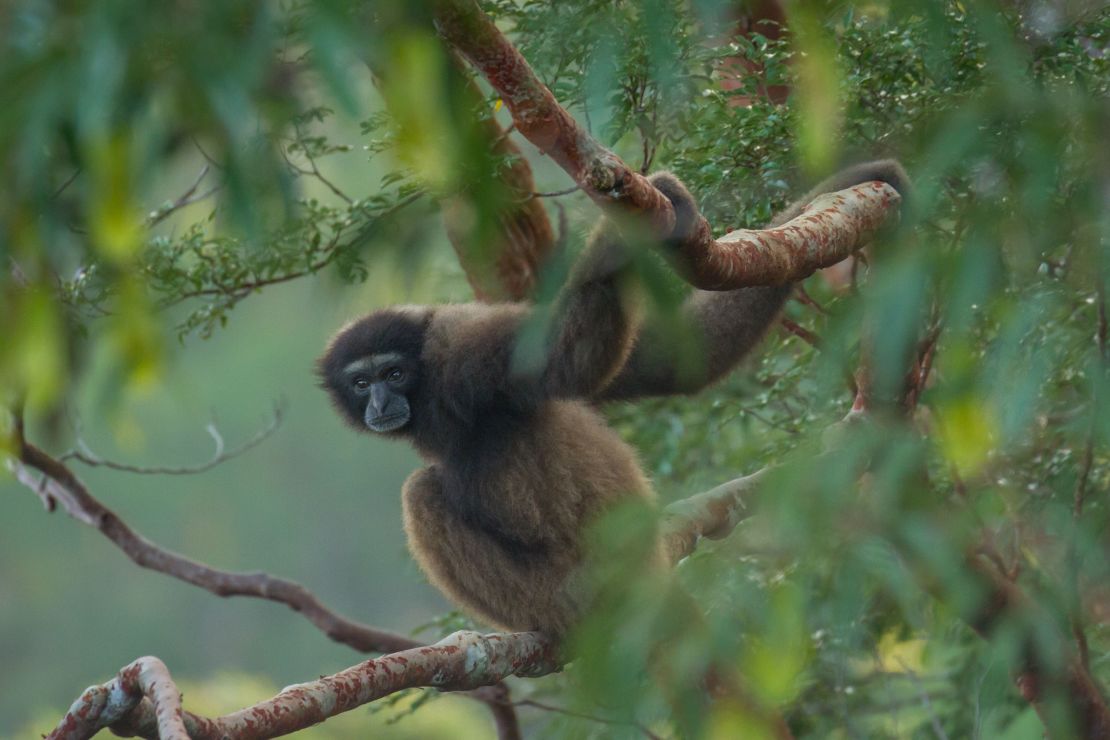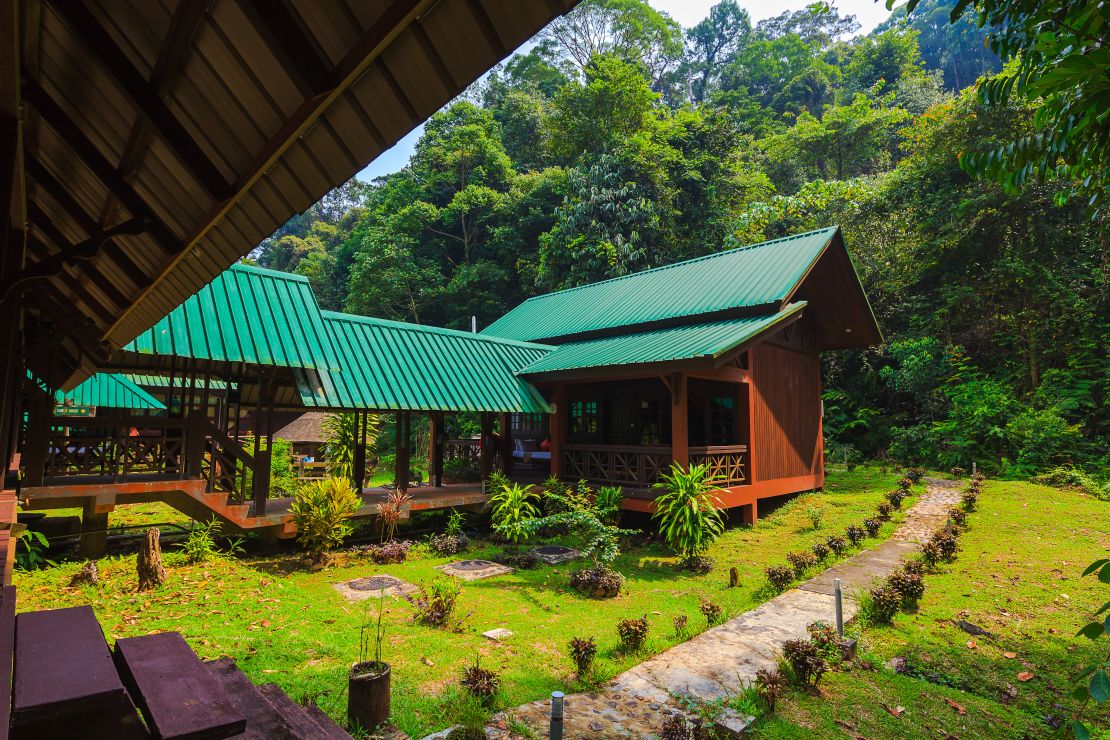Story highlights
Brunei's forested Temburong district is separated from the mainland by a sliver of Malaysia.
In 2019, the two regions of Brunei will finally be connected by an 18.6-mile-long viaduct.
The bridge will make it easier for travelers to explore the sultanate's rainforest -- one of the oldest and most pristine in the world.
Proboscis monkeys, flying foxes, waterfalls, and sunrise canopy walks – the remote region of Temburong, in Brunei, is a natural wonderland.
But separated from Brunei’s main region by a slice of Malaysia, it isn’t the easiest place to reach.
In 2019, an 18.6-mile (30 kilometer) viaduct will change that by connecting this forested exclave of Brunei to the mainland.
Once built, it will reduce the journey time to the region to 20 minutes by car.
“We have to prepare for an influx of tourists,” Leslie Chiang, founder of Brunei-based tour company Borneo Guide and Sumbiling Eco Village, tells CNN.
A country divided

Located on Borneo island, Brunei has two main regions, which are separated by Malaysia’s Sarawak.
That dividing sliver of land was controlled by Brunei until 1885, when the then sultan offered the region to Charles Brooke, the nephew of James Brooke – an English explorer who had helped crush regional rebellions and piracy.
Known as the “White Rajahs,” Brooke and his family ruled Sarawak until World War II.
During that war, Japan took control of the region. It was later ceded to Britain, then became independent in 1963. That year, the territory elected to become part of Malaysia.
“In the early 1970s there was talk about getting back that piece of land so that Brunei would be connected, but due to politics – the (then) sultan … wanted to be good a neighbor with Malaysia – we did not proceed,” explains Chiang.
To resolve the issue, Brunei has contracted the China State Construction Engineering Corporation (CSCEC) to build a bridge between Bandar Seri Begawan and Bangar.
Expected to finish in November 2019, the Temburong Bridge project broke ground in January 2016 and its total cost is estimated to be $1.6 billion.
A green venture
Blessed with oil and natural gas, Brunei was the world’s fifth richest country in 2016, with a GPD (PPP) of $79,710, according Global Finance magazine.
Furthermore, its royal family is one of the wealthiest in the world – Sultan Hassanal Bolkiah is thought to sit on a $20 billion fortune, according to Forbes.
Consequently, the sultanate hasn’t faced economic pressure to pursue logging or develop palm oil plantations in its 140-million-year-old Borneo jungle, as have its neighbors Malaysia and Indonesia.
10 amazing creatures hiding in Brunei's rainforest
But in recent years, declining oil prices have inspired a new focus on tourism.
“The bridge is part of the sultanate’s efforts to diversify the economy and end over-reliance on hydrocarbons,” Patrick Cooke, regional editor of Oxford Business Group, tells CNN.
“It’s hoped that the bridge will open the region up to further international tourism and investment.”
By 2020, the Ministry of Primary Resources and Tourism hopes to have increased tourist arrivals in Brunei from 218,000 in 2015 to 450,000 by 2020, under its 2016-2020 Strategic Plan.
“Temburong is expected to play a big role in the fulfillment of this plan,” says Cooke.
The challenge, he explains, is to ensure the new bridge creates economic opportunities without sacrificing the area’s natural beauty.
Eco credentials
Brunei is well-positioned for a niche eco-tourism market, given that 70% of the sultanate is covered in raw rainforest.
At least 55% of the country’s total land area has been declared protected, according to the Forestry Department.
“We can only pursue eco-tourism (in Brunei). We can’t afford to have mass tourism – it will destroy the place,” says Chiang.
Brunei Facts
“Luckily, the government also focuses on eco-tourism. They’d rather have not many people come, but quality travelers who appreciate the nature and the culture.”
A few resorts catering to environmentally conscious travelers already operate in the area.
Located inside Ulu Temburong National Park Rainforest, the 17-room Ulu Ulu Resort, run in partnership with the government, opened in 2008.
It focuses on environmentally friendly practices, such as composting, recycling, tending an organic garden, and plastic-free amenities.
There are no TVs or screens to distract you from connecting with nature – though Wi-Fi is available on request.

Meanwhile, Chiang’s Sumbiling Eco Village located along the Temburong River employs local villagers to work at the hotel and lead rainforest tours, implements a reduce-and-recycle program to minimize waste, and sources local food whenever possible.
The hotel aims to be completely solar-powered by the end of 2020.
Chiang says visitors love the sense of peace at the eco village.
“It’s surrounded by fruit trees, like durian, and I planted a lot to attract birds that live in the jungle – like hornbills, which come to look for fruits when they’re in season.
“Imagine waking up in the morning with 20 or 30 birds chirping all at once.”
What to do in Brunei's capital of Bandar Seri Begawan
Worries for the future
Even the eco-tourism market will need to be carefully managed to prevent the bridge from negatively impacting the jungle, says Cooke.
“It would be wise to set aside a portion of the profits generated from eco-tourism for conservation projects that demonstrate the sultanate’s commitment to preserving one of the world’s last great wildernesses,” he says.
He points to the Ministry of Development’s proposal to build an “eco town” within the district as a possible source of income.
“We had some concerns at the beginning of the development about dredging and pollution of the Brunei Bay, but that has been mitigated,” Fahim Ibrahim, the vice president of Brunei-based environmental NGO Biodiversity and Natural History Society, says of the project.
“The government has been respectful of the forest and has carefully followed the environmental impact studies to minimize impact.”
Ibrahim says the Brunei government reassured environmental groups that it is not open to proposals for large-scale facilities that might disturb the jungle environment.
“They have opened some land for small-scale eco tourism accommodations, like glamping sites, but no massive resorts,” adds Ibrahim.
“These will be places where you experience the real forest.”
Bridging the gap
It is important to remember that the bridge, Ibrahim says, will do more than simply facilitate tourism.
“The bridge is key to to connecting Brunei – it’s opening up two different communities in Brunei and bringing us together as a nation for the first time,” says Ibrahim.
“We have two years to prepare and figure out how to increase carrying capacity to what it should be, without compromising on our environment,” Anthony Chieng, managing director of Ulu Ulu Resort and Sunshine Borneo Tours & Travel, tells CNN.
“Humans are the worst, you know – we always think of ourselves first, sadly.”
“We have a pristine jungle and that is our treasure for the future.”





































